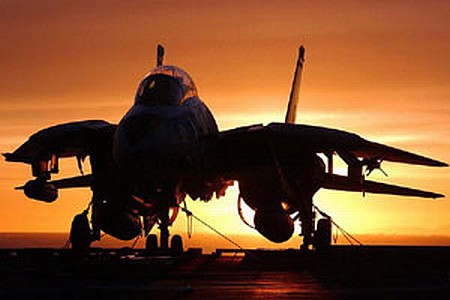
Awesome post here on Kite Forum looking at Kitesurfing safety from a fighter pilots point of view:
There are old fighter pilots and crazy fighter pilots but never old crazy fighter pilots. This seems to directly translate to kitesurfing. I am an instructor pilot in the F-15E fighter jet and a graduate of the Air Force Flight Safety School (similar to the NTSB aircraft crash investigation school). I wanted to discuss some of the corollaries between kiting and flying to 1) Give you an idea of how we execute an inherently dangerous job of flying fighter jets and 2) How you can apply this to kitesurfing safely and confidently.
1. Know Your Jet- Fighter pilots are required to know the ins and outs of every aspect of their aircraft—their life depends on it! This includes the intricacies of the mechanical and emergency systems but most importantly the flight limitations of the aircraft itself.
The difference in kites, bars, quick releases and harnesses is similar to the differences in different fighter jets. Read the owner’s manual, visit the manufacturer’s site, familiarize yourself with your gear and most importantly, HOW the safety features were built to function with your gear.2. Emergency Training- Engine fires, ejections, spins, electrical failure are just a few situations we train to countless times in simulators before we even start the jet. The more you train to bad situations, the more your mind is able to store the appropriate actions in your subconscious; this is where ‘muscle memory’ pays the bills!
I have read many kitemare stories where the mishap kiter had his hands frozen to the control bar with the kite fully powered. Simulate bad situations such as getting drug through the water, lofted into the air, etc. and practice the exact hand movements and actions needed to save your pink butt!3. “Chairflying”- I have logged 1500 hours in military jets but probably have logged twice that “chairflying”, which is literally sitting in a chair visualizing myself going through the entire flight; movements, actions, etc. Flying at over 1000 mph is not the place to be going over something for the first time.
I am sure that most most kiteboarders visualize their tricks, jumps, transitions on the beach beforehand, but it’s important to mention how much this helps with any action sport.4. Risk Assessment- Consider having a glass jar full of change. Bad weather, inexperience, complex missions–take money out of the jar for each of these factors. The less change you have in the jar, the higher the risk. No change left in the jar? This is where the reward must outweigh the risk or it’s a no-go.
Bad weather/tides, offshore winds, obstacles/rocks, experience level, practicing new jumps/tricks- these are all things to consider the risk level when you kite. A smart kiter mitigates these risks such as wearing a helmet/impact vest, kiting with a buddy, safety boats in the area etc.5. Contingencies- If something can go wrong, it probably will. Chances are Darwin will rear his ugly head. Taking a bird down the #1 engine intake while flying at 600mph at 500 feet was never part of my plan, however briefing that ‘hip-pocket’ emergency airfield sure did save my bacon.
Kite malfunction, line snapping, dead wind while 1 mile off the coast, high gusting winds, losing your board? Do you have a plan? Think about these ahead of time and always have an ‘out’.
6. Preflight- Ten minutes is spent before each flight performing a “walkaround” of the jet looking for potential flaws. It’s a good thing I noticed a sheared link in my landing gear before I jumped in; that would not have ended well!
This is preached in ad nauseum in the kitesurfing community for good reason. Don’t blow it off. Frayed lines, small tears in your canopy, quick release frozen up due to sand are all things you can quickly catch on the beach.7. Wingman – Cheesy Top Gun lines…got it. Having a good wingman when you are partying downtown on a Friday night…always. But no kidding we always fly with at least one wingman to “check your six”.
Don’t kite alone, look out for other kiter’s, and always help a fellow kitesurfer if it looks like he/she might be in trouble. Same team Farva, same team!8. Don’t exceed your capabilities- Air Force Fighter Weapons School Graduates (Top Gun) are the only ones qualified to fly at low level down to 100 ft. At 600 mph that’s about 1 second of reaction time between livin’ and a smoking crater. I know I’ve been trained down to 500 ft. so that’s where I stay. My mother thanks me.
At best I’m an intermediate kitesurfer, which means I don’t go trying the same stuff Hadlow is pulling off. Progression is continuous improvement with realistic steps and risk. Push the limits but within reason. “Progressive steps” keep you safe and keep others from having to rescue you from being an idiot.
Lastly, I’m simply a guy with a kite, hoping to pass on something that might get the brain pistons firing, and subsequently save someone from a “what the hell did I get myself into” situation. I’m sure I have only scratched the surface on this subject so pitch in your experience and we all can continue to learn to avoid being that ‘mishap kitesurfer’.
Pray for wind and pay it forward,
There’s a lot of good points in there that we would all do well to remember especially in the rush to get out when the winds in…I know, I for one, never check my kit before I go out.

Great post, keep up the good kite work !
Thanks for a great article! It´s always good to refresh your mind with the fact that kiteboarding isn’t a risk free sport.
Would you mind if I link to this article from kite2012.com?
Not at all mate!